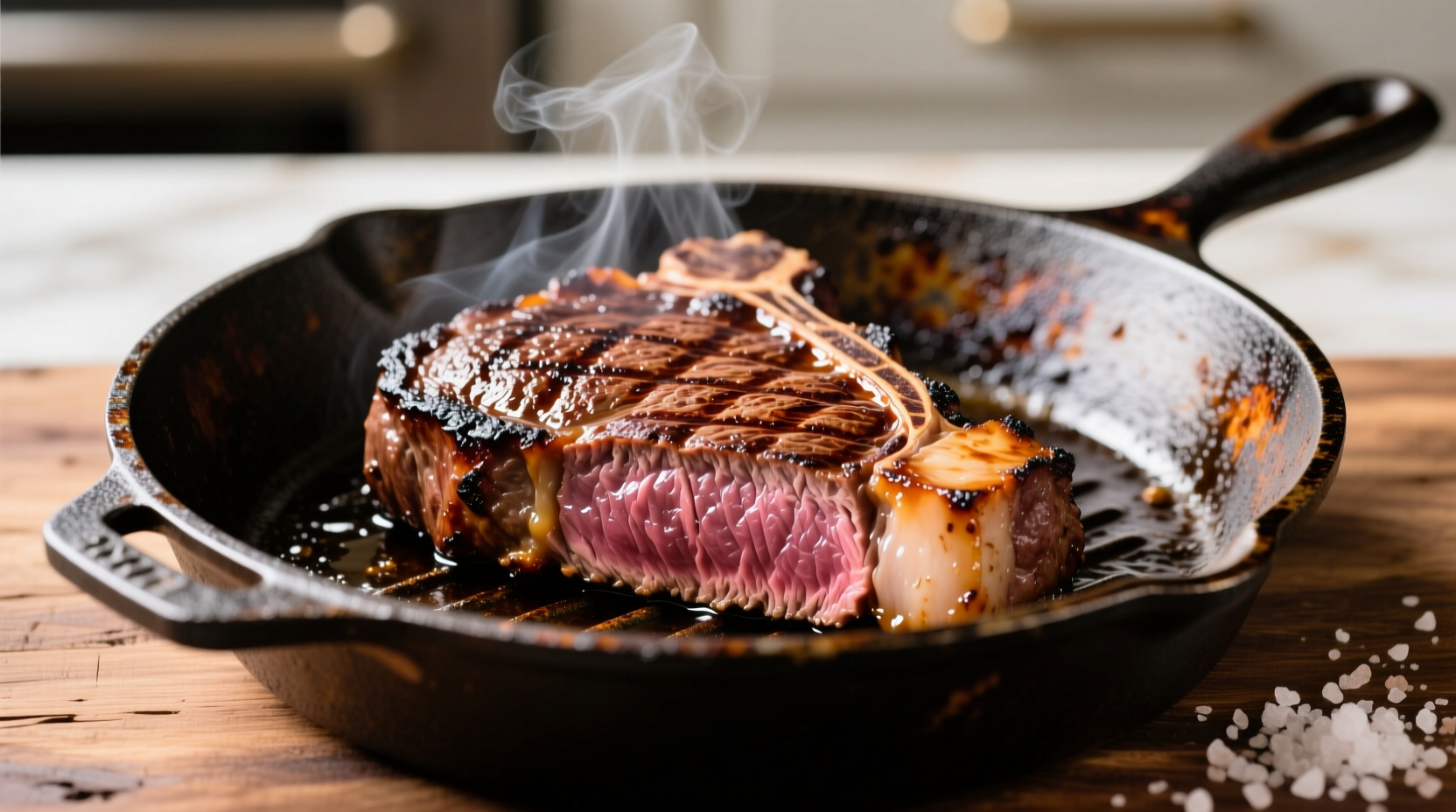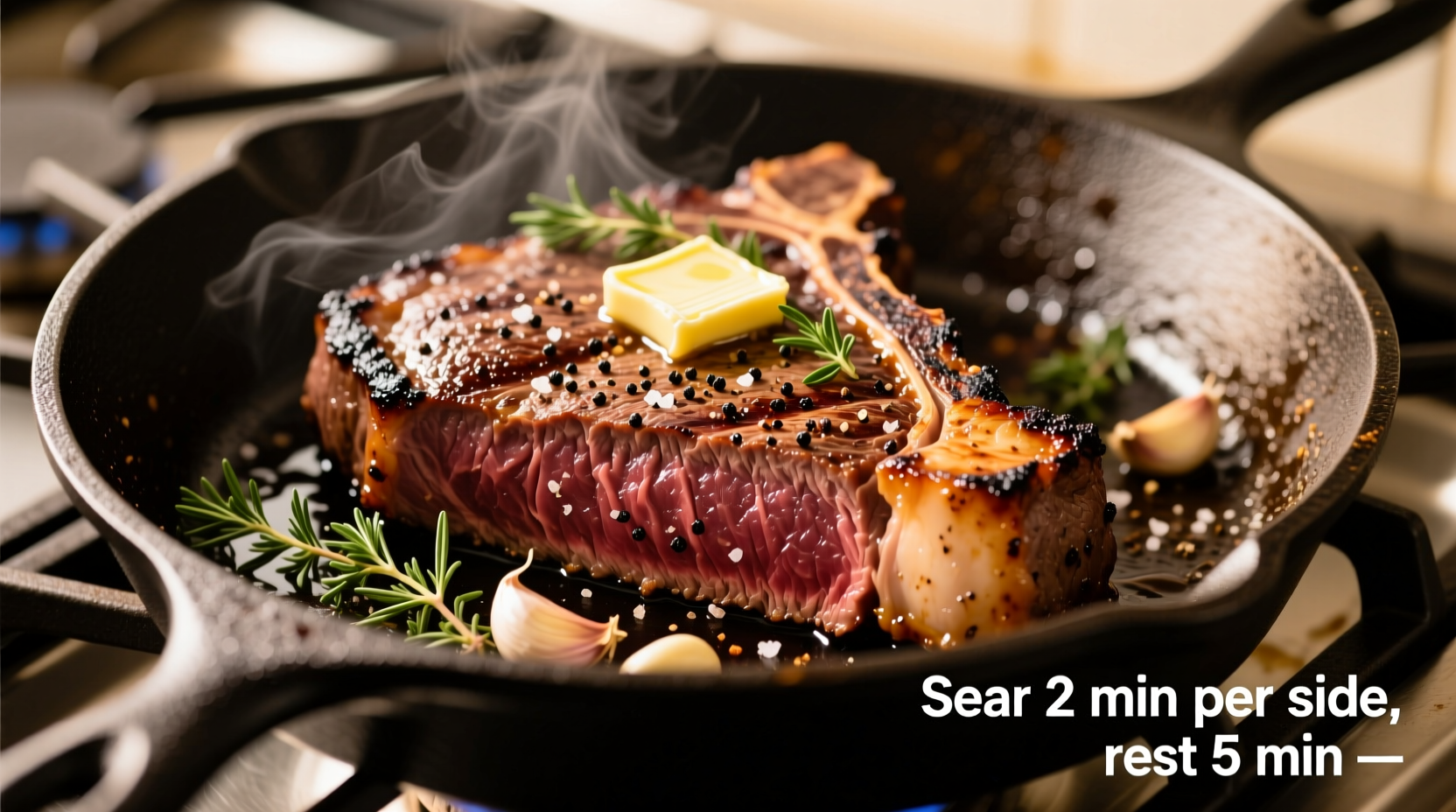Perfectly cook a New York strip steak on the stove in 15 minutes with these professional techniques: bring steak to room temperature, season generously, sear in a smoking hot cast-iron pan for 3-4 minutes per side, baste with butter and aromatics, then rest for 5-10 minutes before serving. Achieve restaurant-quality results with a deep brown crust and precise internal temperature every time.
Cooking a New York strip steak on the stove delivers exceptional results when done correctly. This cut's rich marbling and robust beef flavor shine when seared properly, creating that coveted crust while maintaining tenderness. Unlike thicker cuts requiring oven finishing, the New York strip's ideal thickness (1-1.5 inches) makes it perfect for stovetop cooking alone.
Why Stovetop Cooking Works Best for New York Strip
The New York strip's moderate thickness (typically 1-1.5 inches) responds perfectly to direct stovetop heat. Unlike ribeyes with uneven fat distribution or filets requiring precise temperature control, the strip's uniform shape ensures even cooking. Professional chefs favor this method because it creates superior Maillard reaction—the chemical process responsible for that complex, savory crust—without the need for specialized equipment.

Preparation: Setting Up for Success
Proper preparation makes the difference between good and exceptional steak:
Selecting Your Steak
Choose USDA Prime or Choice grade with visible marbling throughout. Look for steaks 1-1.5 inches thick—thinner cuts overcook easily, while thicker ones may require oven finishing. The ideal weight is 12-16 ounces, providing enough mass for proper heat retention during searing.
Temperature Transition
Remove steak from refrigerator 45-60 minutes before cooking. This critical step ensures even cooking—cold centers remain undercooked while exteriors overcook. The USDA Food Safety and Inspection Service confirms that bringing meat to room temperature for under 2 hours remains within safe food handling guidelines (FSIS guidelines).
Seasoning Strategy
Generously coat all surfaces with coarse kosher salt (1 teaspoon per pound) and freshly ground black pepper. For optimal flavor development, season 40 minutes before cooking—this allows salt to penetrate while drawing out surface moisture for better searing. Avoid marinades that can interfere with crust formation.
The Cooking Process: Precision Timing
Follow this professional sequence for perfect results:
Pan Selection and Preheating
Use a heavy-bottomed cast-iron or carbon steel skillet—these materials retain heat better than nonstick or stainless steel. Preheat on medium-high for 5-7 minutes until smoking hot (around 500°F). Test readiness by flicking a few water droplets; they should instantly vaporize and dance across the surface.
Searing Technique
Place steak in pan away from you to avoid oil splatter. Press gently for 10 seconds to ensure full contact. Cook undisturbed for 3-4 minutes to develop crust. Flip once using tongs (never pierce with a fork) and repeat. For thicker cuts (over 1.25 inches), tilt pan and spoon hot oil over edges for even cooking.
| Doneness | Internal Temperature | Total Cooking Time* |
|---|---|---|
| Rare | 120-125°F | 6-8 minutes |
| Medium Rare | 130-135°F | 8-10 minutes |
| Medium | 140-145°F | 10-12 minutes |
| Medium Well | 150-155°F | 12-14 minutes |
*For 1.25-inch thick steak at 500°F pan temperature. Times vary based on thickness and starting temperature.
Butter Basting for Flavor Depth
During the final 2 minutes of cooking, add 2 tablespoons butter, 2 crushed garlic cloves, and fresh thyme or rosemary to the pan. Tilt skillet and continuously spoon melted butter over the steak surface. This technique, used in professional kitchens, infuses additional flavor while gently cooking the top surface without burning.
Critical Resting Phase
Transfer steak to a wire rack (not a plate) and rest for 5-10 minutes—this allows juices to redistribute. Cutting too soon releases precious juices onto your plate. The American Meat Science Association confirms that proper resting increases moisture retention by up to 25% (AMS research). Internal temperature will continue rising 5-10°F during this time (carryover cooking).
Serving Perfection
Slice against the grain at a 45-degree angle using a sharp knife. The New York strip's distinctive grain pattern runs horizontally across the steak—slicing perpendicular to these fibers ensures maximum tenderness. Serve immediately with pan drippings spooned over the top.
Troubleshooting Common Issues
Problem: Steak sticks to the pan
Solution: Ensure proper preheating—the Maillard reaction creates a natural release point once the crust forms. Never force separation.
Problem: Uneven cooking
Solution: Press thinner edges against the pan during initial sear to compensate for natural tapering.
Problem: Excessive smoke
Solution: Use refined avocado or grapeseed oil (smoke point 500°F+) instead of olive oil, and ensure proper ventilation.
Advanced Technique: The Reverse Sear Alternative
For thicker cuts (1.5+ inches), try the reverse sear method: bake at 275°F until internal temperature reaches 115°F, then sear for 60-90 seconds per side. This technique, validated by America's Test Kitchen, ensures perfectly even doneness from edge to edge while developing an exceptional crust.











 浙公网安备
33010002000092号
浙公网安备
33010002000092号 浙B2-20120091-4
浙B2-20120091-4